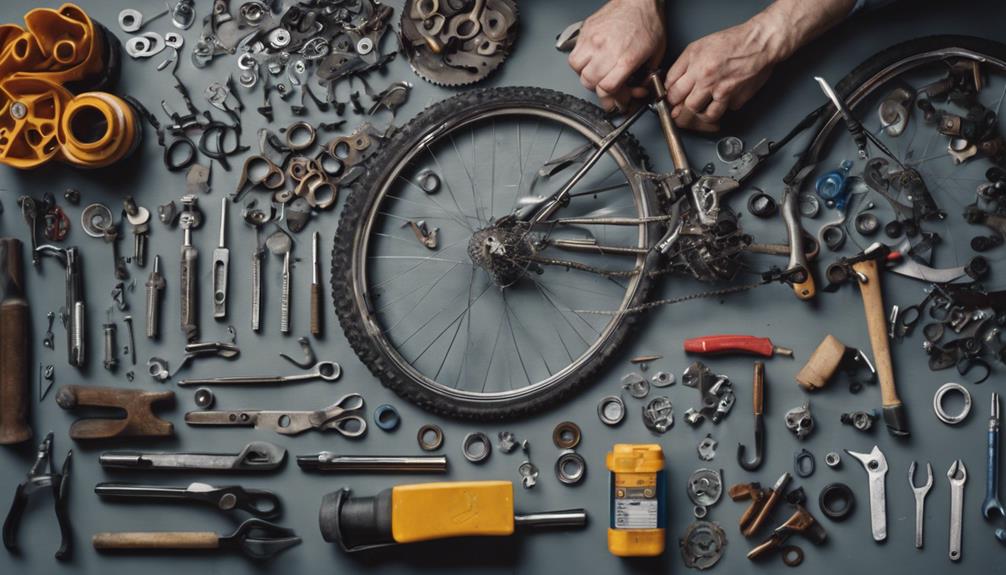One of the most frequently asked questions among cycling enthusiasts is, “How long does a bicycle chain last?” The lifespan of a bicycle chain can significantly influence your bike’s overall performance and safety. In this comprehensive guide, we will explore the factors that affect the longevity of a bicycle chain, maintenance tips to extend its life, and signs that indicate when it’s time for a replacement. Whether you’re an occasional rider or a dedicated cyclist, understanding these aspects will help you maintain your bike and enhance your riding experience.
The Average Lifespan of a Bicycle Chain
On average, a bicycle chain can last anywhere from 1,500 to 3,000 miles, depending on various factors such as riding conditions, maintenance, and the type of bicycle. For instance, mountain bike chains tend to wear out faster due to rough terrains and dirt, while road bike chains can last longer if they are used primarily on smooth surfaces. However, this is just a general guideline. Many professional cyclists may replace their chains every few hundred miles, especially if they are racing or training intensively.
Factors Influencing Bicycle Chain Longevity
Understanding how long a bicycle chain lasts involves considering several factors. Firstly, riding style plays a crucial role. Aggressive riders who frequently shift gears or ride in challenging conditions will wear their chains out more quickly. Secondly, environmental conditions, such as exposure to rain, mud, or road salt, can lead to rust and corrosion, thereby shortening the chain’s lifespan. Lastly, the quality of the chain itself matters; higher-end chains made from better materials tend to last longer than budget options.
Signs That Your Bicycle Chain Needs Replacement
Knowing how to identify when your bicycle chain is worn out is crucial for maintaining optimal bike performance. One common method for assessing chain wear is the “chain checker” tool, which measures elongation. A chain that has stretched beyond 0.5% to 0.75% of its original length is typically due for replacement. Other signs include skipping gears, excessive noise while pedaling, and a stiff or rough feel while shifting. Regularly checking your chain can help you catch these issues before they lead to more significant damage to your bike’s drivetrain.
Essential Bicycle Chain Maintenance Tips
To maximize the lifespan of your bicycle chain, regular maintenance is key. Start by cleaning the chain every few rides, especially if you’ve been cycling in wet or muddy conditions. Use a degreaser and a brush to remove dirt and grime, followed by rinsing and drying the chain thoroughly. After cleaning, apply a suitable lubricant to ensure smooth operation and reduce friction. Additionally, regularly check the chain tension and alignment to prevent premature wear. Following these maintenance tips can significantly extend the life of your bicycle chain.
Choosing the Right Bicycle Chain for Your Ride
Selecting the right bicycle chain is essential for ensuring compatibility and performance. Different bikes use various chain sizes and types, so it’s crucial to consult your bike’s specifications or a professional mechanic before purchasing a new chain. Brands like Shimano, SRAM, and KMC offer a range of bicycle chains suited for different riding styles and conditions. Investing in a quality chain that meets your bike’s requirements is a wise choice that can help prevent issues down the line.
How to Replace a Worn Bicycle Chain
Replacing a worn bicycle chain is a task that many cyclists can handle on their own with the right tools. To replace the chain, you’ll need a chain tool, a new chain, and possibly a quick-link connector. Start by removing the old chain using the chain tool, making sure to note how it was threaded through the derailleur for easy reinstallation. Next, thread the new chain through the derailleur, ensuring that it follows the correct path, and connect it using the quick-link or by pinning the chain together. Finally, check the tension and alignment before taking your bike for a test ride.
Conclusion: Keeping Your Bicycle Chain in Top Shape
In summary, understanding how long a bicycle chain lasts and the factors influencing its lifespan is vital for every cyclist. By implementing regular maintenance, recognizing the signs of wear, and choosing the right chain, you can enhance your cycling experience and ensure your bike operates smoothly. Remember, a well-maintained chain not only prolongs its life but also protects other components of your bike, ultimately saving you time and money in the long run. Keep pedaling, and happy cycling!
